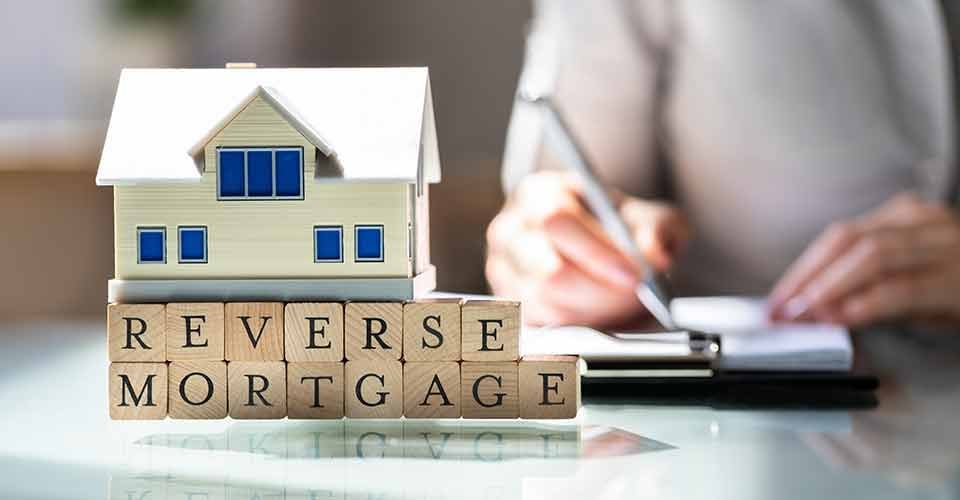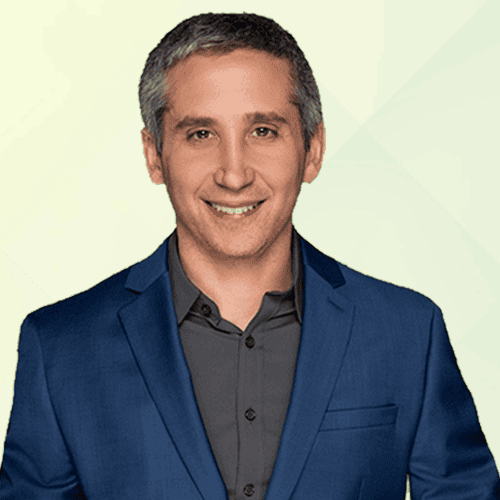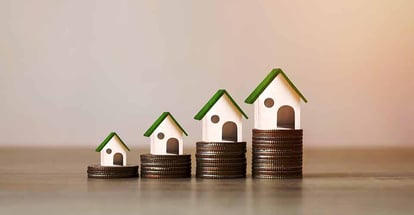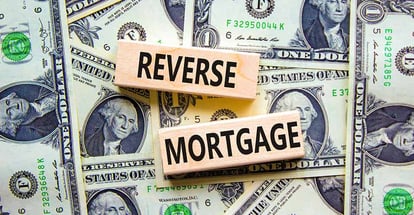How to Get a Reverse Mortgage with an Existing Mortgage
If you’re a homeowner looking to unlock the equity from your property, a reverse mortgage can help you achieve financial freedom and security. Taking out a reverse mortgage when you already have an existing traditional mortgage requires strategic planning, so let’s go into the basics of how to get one with what is currently in place.
Whether you are seeking extra funds for retirement or just need financial assistance during difficult times, this guide will review key considerations when obtaining a reverse mortgage while still having an existing typical loan.
Can You Get a Reverse Mortgage with an Existing Mortgage?
If you're a homeowner considering a reverse mortgage, one question that may come to mind is whether having an existing mortgage on your house will disqualify you from this type of loan.
The good news is that it is possible to get a reverse mortgage even if you still have a mortgage balance. In fact, one of the primary uses of a reverse mortgage is to pay off any outstanding mortgages or liens on the property.
So, if you qualify for a reverse mortgage, the proceeds from the loan will be used to pay off your existing mortgage and any other liens on your home's title.
This can help you free up cash flow and enjoy a more comfortable retirement without worrying about making monthly mortgage payments.
Steps to Get a Reverse Mortgage with an Existing Mortgage
- Understand your existing mortgage
- Determine eligibility for a reverse mortgage with an existing mortgage
- Consider options for dealing with your existing mortgage
- Research and compare reverse mortgage lenders
- Get counseling from a HUD-approved agency
- Complete the application process
- Close the loan and receive funds
Understand your existing mortgage
The first step towards getting a reverse mortgage while having an existing mortgage is to fully understand your current mortgage.
Before you can begin exploring the option of a reverse mortgage, it's important to have a clear picture of your current mortgage situation. This includes understanding your outstanding balance, interest rate, and monthly payment.
Your outstanding balance is the amount of money you still owe on your existing mortgage. This information can usually be found on your most recent mortgage statement.
The interest rate is the percentage that you are being charged on your mortgage loan. This rate can also be found on your mortgage statement or by contacting your lender. The monthly payment is the amount you are currently paying each month to service your mortgage.
Understanding these key pieces of information is important because they will help you determine whether a reverse mortgage is a viable option for you.
For example, if you have a high outstanding balance or a high interest rate, a reverse mortgage may be able to help you access the equity in your home and pay off your existing mortgage.
However, if your existing mortgage has a low balance or a low interest rate, it may not make sense to take out a reverse mortgage.
It's also important to note that if you have a home equity loan or a line of credit, these debts will need to be paid off before you can qualify for a reverse mortgage.
This is because a reverse mortgage is designed to be the primary mortgage on your home, and any existing debts must be paid off first.
Determine eligibility for a reverse mortgage with an existing mortgage
Once you have a clear understanding of your existing mortgage, the next step towards getting a reverse mortgage while having an existing mortgage is to determine your eligibility for the reverse mortgage.
Not all borrowers with an existing mortgage will qualify for a reverse mortgage, so it's important to understand the requirements.
One of the most important eligibility requirements is having enough equity in your home to cover both mortgages.
This means that the value of your home must be greater than the total amount you owe on your existing mortgage and any other liens on the property.
The amount of equity you have in your home will determine the maximum amount you can borrow with a reverse mortgage.
In addition to having sufficient equity, you must also be at least 62 years old to qualify for a reverse mortgage. This age requirement ensures that the borrower has a reasonable amount of time left in their life to benefit from the reverse mortgage.
Another important requirement is that you must live in the home as your primary residence. This means that you cannot use a reverse mortgage to purchase a second home or investment property.
Credit score and income requirements are generally less strict for reverse mortgages compared to traditional mortgages, but lenders may still consider your creditworthiness and ability to repay the loan.
Finally, it's important to note that if you have an existing mortgage, you will need to pay it off with the funds you receive from the reverse mortgage.
This means that you will no longer have a monthly mortgage payment, but you will have a new loan with its own fees and interest rates.
In summary, determining your eligibility for a reverse mortgage while having an existing mortgage requires meeting certain requirements, such as having enough equity in your home to cover both mortgages, being at least 62 years old, and living in the home as your primary residence.
While credit score and income requirements may be less strict for reverse mortgages, you will still need to repay your existing mortgage with the funds you receive from the reverse mortgage.

Consider options for dealing with your existing mortgage
Once you have determined your eligibility for a reverse mortgage while having an existing mortgage, the next step is to consider your options for dealing with your existing mortgage.
Depending on your financial situation and goals, you may need to pay off or refinance your existing mortgage before you can get a reverse mortgage, or you may be able to use the proceeds from your reverse mortgage to pay off your existing mortgage.
One option is to pay off your existing mortgage before applying for a reverse mortgage. This may be necessary if you don't have enough equity in your home to cover both mortgages or if you don't qualify for a reverse mortgage for other reasons.
Paying off your existing mortgage will free up your monthly cash flow and allow you to access the equity in your home through a reverse mortgage.
Another option is to refinance your existing mortgage before applying for a reverse mortgage.
Refinancing may be beneficial if you have a high interest rate on your existing mortgage and can lower your interest rate and monthly payment by refinancing. This can also help you qualify for a larger reverse mortgage by increasing the amount of equity in your home.
Finally, you may be able to use the proceeds from your reverse mortgage to pay off your existing mortgage. This can be a convenient option because it allows you to eliminate your monthly mortgage payment while accessing the equity in your home.
However, it's important to remember that the funds from the reverse mortgage must first be used to pay off your existing mortgage before you can use them for any other purpose.
Research and compare reverse mortgage lenders
After understanding your existing mortgage, determining eligibility, and considering options for dealing with your existing mortgage, the next step towards getting a reverse mortgage while having an existing mortgage is to research and compare reverse mortgage lenders.
It's important to look for reputable lenders and compare their terms and rates to find the best option for you.
To start your research, you can look for recommendations from family and friends, search online for reviews and ratings of reverse mortgage lenders, and check with the Better Business Bureau for any complaints or negative feedback.
Once you have a list of potential lenders, you can start comparing their terms and rates. Some important factors to consider when comparing reverse mortgage lenders include:
-
Interest rates - Reverse mortgage interest rates can vary significantly between lenders, so it's important to compare rates to find the best deal. Keep in mind that the interest on a reverse mortgage is compounded over time, so even a small difference in interest rates can have a significant impact on the amount you owe.
-
Fees - Reverse mortgage lenders may charge fees for origination, servicing, and other costs. These fees can vary widely between lenders, so be sure to compare fees as well as interest rates.
-
Loan terms - Reverse mortgages can have different terms, such as fixed or adjustable interest rates, and different repayment options. Be sure to compare the terms of each lender to find the best option for your needs.
- Reputation - It's important to choose a reputable lender with a history of providing quality service and fair terms. Look for lenders with good reviews and ratings, and avoid those with a history of complaints or negative feedback.
Get counseling from a HUD-approved agency
Before getting a reverse mortgage while having an existing mortgage, it is required by law that you receive counseling from a HUD-approved agency.
This counseling is designed to ensure that you fully understand the terms of a reverse mortgage and all of your options, and it is an important step in the process.
HUD-approved agencies provide unbiased information and counseling services to help you make an informed decision about whether a reverse mortgage is right for you.
During the counseling session, a counselor will explain the features and costs of a reverse mortgage, including the interest rates, fees, and repayment options.
They will also discuss the impact of a reverse mortgage on your estate and inheritance, as well as any alternatives to a reverse mortgage that may be available.
The counseling session typically lasts 60-90 minutes and can be conducted over the phone or in person. You will be required to provide information about your financial situation and your existing mortgage, as well as your goals and concerns regarding a reverse mortgage.
The counselor will use this information to provide personalized advice and recommendations that are tailored to your specific needs.
After the counseling session, you will receive a certificate of completion that you will need to provide to your lender when applying for a reverse mortgage.
The certificate verifies that you have received counseling from a HUD-approved agency and understand the terms and implications of a reverse mortgage.
Complete the application process
Once you have completed counseling with a HUD-approved agency and have decided to move forward with a reverse mortgage while having an existing mortgage, the next step is to complete the application process with the lender you have chosen.
This process includes submitting documentation to verify your eligibility and qualify you for the loan. The documentation that you will need to provide to the lender typically includes:
-
Proof of income - Lenders require that you have a steady source of income to ensure that you will be able to continue paying property taxes and homeowners insurance after you have received the reverse mortgage funds.
-
Property taxes - You will need to provide documentation showing that you are current on your property taxes, or have a plan to pay them with the proceeds of the reverse mortgage.
-
Homeowners insurance - You will need to provide documentation showing that you have a current homeowners insurance policy that covers your property.
-
Existing mortgage information - You will need to provide information about your existing mortgage, including the outstanding balance, interest rate, and monthly payment.
- Property appraisal - Lenders require an appraisal of your property to determine its current market value and assess the amount of equity you have available for the reverse mortgage.
Once you have submitted all of the required documentation, the lender will review your application and make a decision on whether to approve the reverse mortgage.
If approved, the lender will provide you with a loan estimate that outlines the terms and costs of the reverse mortgage, including interest rates, fees, and repayment options.
You will then have the opportunity to review the loan estimate and ask any questions or make any changes before signing the loan documents.
Once you have signed the loan documents, the lender will disburse the reverse mortgage funds to you, either in a lump sum or as a line of credit, depending on the terms of the loan.
Close the loan and receive funds
After the lender approves your application for a reverse mortgage while having an existing mortgage, the final step is to close the loan and receive the funds.
Closing the loan involves signing a set of legal documents and paying any closing costs associated with the loan.
During the closing process, you will have the opportunity to review and sign the loan documents, which will outline the terms and conditions of the reverse mortgage, including the interest rate, repayment options, and any fees or charges associated with the loan.
Once you have signed the loan documents, the lender will disburse the funds to you, either in a lump sum, line of credit, or monthly payments, depending on the terms of the loan.
You can use these funds to pay off your existing mortgage, cover other expenses, or simply save them for future use.
Bottom Line
In conclusion, obtaining a reverse mortgage while having an existing mortgage can be a complex process with many considerations to keep in mind. It's important to fully understand the terms and costs of the loan, as well as any potential impacts on your equity and financial situation.
To successfully navigate this process, you should first understand your existing mortgage and determine your eligibility for a reverse mortgage. Then, you should consider your options for dealing with your existing mortgage and research and compare lenders to find the best option for you.
Before proceeding with a reverse mortgage, it's required by law that you receive counseling from a HUD-approved agency. Finally, you can complete the application process, close the loan, and receive the funds.
By following these steps and taking the time to fully understand the process, you can make an informed decision and secure a reverse mortgage that best meets your needs and financial goals.
With over 50 years of mortgage industry experience, we are here to help you achieve the American dream of owning a home. We strive to provide the best education before, during, and after you buy a home. Our advice is based on experience with Phil Ganz and Team closing over One billion dollars and helping countless families.

About Author - Phil Ganz
Phil Ganz has over 20+ years of experience in the residential financing space. With over a billion dollars of funded loans, Phil helps homebuyers configure the perfect mortgage plan. Whether it's your first home, a complex multiple-property purchase, or anything in between, Phil has the experience to help you achieve your goals.


 By
By  Edited by
Edited by 






